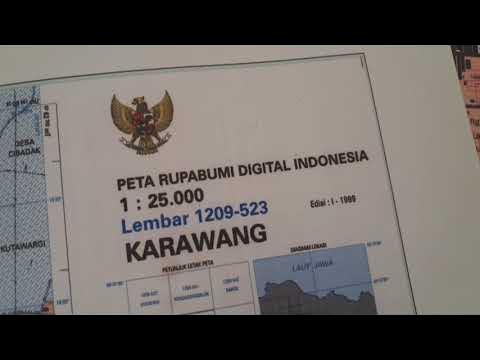Cartography, Projections and Scales
Summary
TLDRThis video explores essential concepts in cartography, including projections and scales crucial for interpreting navigation charts. It defines cartography, differentiates maps and charts, and delves into various projection types like azimuthal, cylindrical, and conical, explaining their characteristics and uses. The video also covers how projections affect map accuracy and introduces the concept of scale, illustrating how to calculate real distances from map measurements. These insights are valuable for understanding navigation and mapmaking.
Takeaways
- 🌍 Cartography is the science of representing the Earth's surface on a 2D surface like paper at a smaller scale.
- 🗺️ A chart is a specialized type of map designed for a specific purpose, such as navigation for ships or planes.
- 🔍 The challenge of cartography lies in accurately representing a 3D figure like the Earth on a 2D surface without distortion.
- 📐 Projections are methods of representing the Earth's surface on a 2D plane, with various types preserving different properties like shape, area, distance, or direction.
- 📈 There is no single projection that can perfectly preserve all characteristics, so choices are made based on the map's purpose.
- 💡 The concept of projection can be visualized by imagining a light bulb inside the Earth projecting its surface onto a surrounding piece of paper.
- 🌐 Azimuthal projections have no distortion at the center point and are used to map the poles but are not common for navigation.
- 📏 Cylindrical projections show no distortion along the equator, with increasing distortion away from it, and are useful for direction measurement.
- 📐 Conical projections touch the Earth at two standard parallels, preserving accuracy at these points with distortion increasing away from them.
- 🔢 Scale is the relationship between a map measurement and the actual Earth measurement, essential for maintaining correct proportions.
- 📏 Maps publish their scale in various formats, which can be used to calculate real-world distances without tools like a plotter.
Q & A
What is cartography and where does the word come from?
-Cartography is the science of representing a part or all of the Earth's surface graphically at a smaller scale on a 2D surface such as a piece of paper. The word comes from 'cardo,' meaning map, and 'graph,' meaning to write.
What is the difference between a map and a chart?
-A chart is a specialized type of map that contains information related to a specific purpose, such as nautical charts for sea navigation or aeronautical charts for air navigation.
Why is it difficult to represent the Earth's surface on a 2D plane?
-It is difficult because representing a 3D figure like the Earth on a 2D plane cannot maintain all its proportions, scales, and features accurately. This requires the use of projections that introduce some level of distortion.
What are map projections and why are they important?
-Map projections are methods used to represent the Earth's curved surface on a 2D plane. They are important because they allow us to create maps, but each projection introduces some distortion in shape, area, distance, or direction.
What is a conformal projection and what does it preserve?
-A conformal projection maintains the correct shape of objects and surfaces, ensuring that angles and shapes are preserved accurately.
What does an equivalent projection maintain?
-An equivalent projection maintains the magnitude of the area of objects and surfaces correctly, ensuring that the size of areas is accurate.
What is an azimuthal projection and where is it most accurate?
-An azimuthal projection is a type of map projection where a flat piece of paper touches the Earth at a single point, typically a pole. It is most accurate at the center point where the paper touches the Earth, with distortion increasing as you move away from this point.
What are the characteristics of a cylindrical projection?
-In a cylindrical projection, the map is created by projecting the Earth's surface onto a cylinder. It is most accurate around the equator, with distortion increasing towards the poles. Meridians and parallels intersect at right angles, making it easier to measure direction, but the size of areas can be distorted.
How does a conical projection differ from a cylindrical projection?
-A conical projection involves projecting the Earth's surface onto a cone that touches the Earth along two standard parallels. It preserves accuracy and properties near these parallels, with distortion increasing away from them. Unlike cylindrical projections, it offers a different pattern of distortion suitable for mid-latitude regions.
What is the formula for determining real distance on a map using scale?
-The formula for determining real distance is: Real Distance = Map Distance x Scale. For example, if the map scale is 1:1,000,000 and the map distance is 16 centimeters, the real distance is 16,000,000 centimeters, which can then be converted to other units like nautical miles.
Outlines

Cette section est réservée aux utilisateurs payants. Améliorez votre compte pour accéder à cette section.
Améliorer maintenantMindmap

Cette section est réservée aux utilisateurs payants. Améliorez votre compte pour accéder à cette section.
Améliorer maintenantKeywords

Cette section est réservée aux utilisateurs payants. Améliorez votre compte pour accéder à cette section.
Améliorer maintenantHighlights

Cette section est réservée aux utilisateurs payants. Améliorez votre compte pour accéder à cette section.
Améliorer maintenantTranscripts

Cette section est réservée aux utilisateurs payants. Améliorez votre compte pour accéder à cette section.
Améliorer maintenantVoir Plus de Vidéos Connexes
5.0 / 5 (0 votes)






